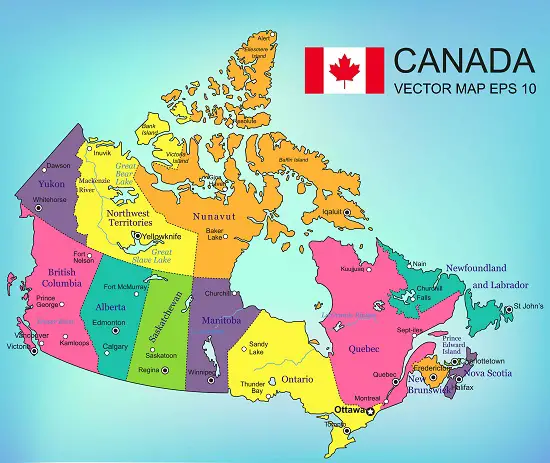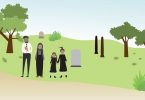| Canada is one of the largest countries in the world. |
| It is located in the northern half of the continent of North America, above the United States. |
| Canada is divided into ten provinces and three territories, |
| each of which is different from the others. |
| The province of British Columbia is located at the far western end of Canada. |
| British Columbia stretches from the Pacific Ocean, at the west, |
| to the Rocky Mountains, at the east. |
| British Columbia contains the city of Vancouver, where two million people live. |
| Most of the land of British Columbia is very mountainous, |
| with vast forests covering the mountains. |
| In British Columbia, forestry is an important industry, |
| providing wood for people around the world. |
| Moving east from British Columbia, the next provinces are |
| Alberta, Saskatchewan, and Manitoba. |
| These are known as the prairie provinces, |
| because they are mostly made of flat, grassy land called “prairie”. |
| Alberta is the province where the flat prairie meets the tall beautiful Rocky Mountains. |
| In Alberta, there are many fields where oil and gas are found, |
| and there are also many farms where cattle are raised. |
| Saskatchewan is the province that grows the most wheat. |
| Wheat from Saskatchewan is sent around the world |
| to make bread and pasta for many people. |
| Manitoba is the other prairie province. |
| Its largest city, Winnipeg, is about halfway between the Pacific and Atlantic oceans. |
| Winnipeg has the coldest winters of any large city in the world, |
| with temperatures sometimes reaching -40 degrees Celsius! |
| Moving east, the next province is Ontario. |
| The land in the northern part of Ontario is very rocky |
| and contains many thousands and thousands of lakes. |
| Many mines are found in northern Ontario. |
| In the southern part of Ontario, there is good farmland, |
| and there are also many cities where factories produce cars and steel. |
| Ontario contains Canada’s largest city, Toronto, |
| as well as the capital city of Canada – Ottawa. |
| In the southern part of Ontario are four of the largest lakes in the world, |
| known as the Great Lakes. |
| Next to Ontario is the province of Quebec. |
| Unlike the other provinces, where most people speak English, |
| most of the people in Quebec speak French. |
| The capital of Quebec is called Quebec City, |
| and this is one of the oldest cities in North America. |
| Quebec City contains many buildings that are hundreds of years old. |
| Also in the province of Quebec is the city of Montreal. |
| Of all the French-speaking cities in the world, only Paris is larger than Montreal! |
| In the eastern part of Canada are the Atlantic provinces, |
| which are next to the Atlantic Ocean. |
| These provinces are New Brunswick, Nova Scotia, |
| Prince Edward Island, and Newfoundland. |
| In the Atlantic provinces, fishing is an important industry. |
| Tourism is also important as many people come to see the beauty of these provinces. |
| The people in these provinces are said to be the friendliest in Canada. |
| In the far north of Canada are the three territories that lie beside the Arctic Ocean: |
| Yukon, Northwest Territories, and Nunavut. |
| Many of the people in these territories are the Native people of Canada, |
| known as the Indians and the Inuit. |
| The northern areas have very cold, dark winters. |
| The summer is short, but the days are very long and bright. |
More English listening lessons for intermediate level:
Lesson 52: The History of Trial By Jury





